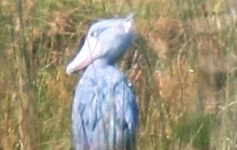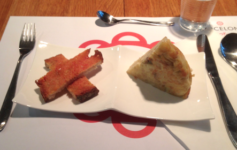This is especially true if the thrips are present in high numbers and are reproducing on the plants. Although Aeris contains imidacloprid, the thiodicarb component (used for nematodes) also has thrips activity and it has performed well even where imidacloprid alone has not. This is good, but we still need to be aware of conditions favoring thrips. Thrips are a major cotton pest that invade cotton from crops or weeds that are drying down and can cause moderate to high damage to seedlings if not controlled. Cooperative Extension, which staffs local offices in all 100 counties and with the Eastern Band of Cherokee Indians. The bean thrips occasionally appears on cotton in summer, usually at field edges. Aeris treated seed is still provides good control and is available by Bayer CropScience as a down stream treatment at your local dealer. Therefore, preventative use of seed treatments is a standard practice and is very appropriate. Cooperative Extension prohibits discrimination and harassment on the basis of race, color, national origin, age, sex (including pregnancy), disability, religion, sexual orientation, gender identity, and veteran status. It is very important to remember that there will always be adult thrips on cotton. Thrips injury on cotton without an insecticide seed treatment. Tobacco thrips are the species encountered more than 90% of the time in Mississippi. Thrips remain the top early-season pest in west Texas cotton, says Kerry Siders, Texas A&M AgriLife Extension IPM agent. Additionally, if you are set up to spray in-furrow, acephate at 0.75-1 lb/acre is a very good option in addition to an imidacloprid seed treatment but not in place of. lint yield advantage when thrips are controlled with a seed treatment. If Aeris is not an option, I would strongly consider having your dealer over-treat your imidacloprid treated seed with acephate (6.4 oz/cwt). However, excellent weather also benefits thrips populations that are developing in non-crop weeds, cover crop rye, and other small grains. Seedling cotton.Thrips feed on the cotyledons and in the developing terminal of young cot-ton seedlings. Once cotton has reached the 4 true leaf stage, root differentiation has increased, terminal bud growth is accelerated and plants become less susceptible to injury. 1). All Rights reserved. Data for four seasons are presented on the seasonal abundance and species composition of thrips on cotton in the Namoi Valley, N.S.W. More thrips pressure occurs farther north and west of Lubbock, where more wheat is produced. NC State Extension is the largest outreach program at NC State University. Working hand-in-hand with our partners at N.C. A&T and 101 local governments, we conduct groundbreaking research that addresses real-world issues in communities across the state. Despite their small size, these insects have the potential to cause yield reductions of more than 100 pounds of lint per acre; extremely heavy infestations can even cause death of seedling plants. Tobacco thrips are the species that are encountered more than 90% of the time in Mississippi. Many species feed within the plant buds or curled leaves, so they can be very difficult to detect. (Optional) North Carolina planted about 450,000 acres in 2013, which places the state third in cotton acreage behind Texas and Georgia. Tobacco thrips are the species that are encountered more than 90% of the time in Mississippi. */. The boll weevil arrived in the state that year and acreage dropped until the weevil was eradicated in the late 70s and early 80s. Image 1599762 is of thrips damage on cotton. Traditional identification of thrips species based on morphology is difficult, laborious, and especially challenging for immature thrips. Cotton planted prior to May 10 and in conventional tillage is considered at high risk for thrips damage. Thrips initially feed on the lower surface of cotyledons and then in the terminal bud of developing seedlings. This does not include value added through the North Carolina’s textile industry. N.C. Figure 3. either alone or in combination with a nematicide. Bud feeding thrips inhabit the growing tips of pre-flowering cotton causing distorted growth. Thrips inhabiting cotton plants include bud (grass and flower) and leaf feeders, and predatory species. Bud feeding thrips inhabit the growing tips of pre-flowering cotton causing distorted growth. Thrips are important pests on seedling cotton in South Carolina. PDF | On May 26, 2017, Suhas Vyavhare published Thrips in Cotton | Find, read and cite all the research you need on ResearchGate 1 pest of seedling cotton. The best foliar insecticide application timing for thrips control is the 1-2 leaf cotton stage for maximum economic returns; however, this does not line up very well with residual herbicide applications so insecticide applications are often considered an âextra tripâ. The species complex, species abundance, extent of crop injury, and impact on lint yield varies widely across the cotton states. “Our area has been extremely dry for about four months,” Siders says. From 2000 to 2004, thrips infested a total of 25.5 million hectares throughout the U.S. and caused an estimated loss of 789,230 bales of lint. /* Add your own MailChimp form style overrides in your site stylesheet or in this style block. The most common species of plant-feeding thrips in Texas cotton include flower thrips, onion thrips, and western flower thrips. Some species of thrips create galls, almost always in leaf tissue. Thrips are tiny, slender insects less than 0.06 inch (1.55 mm) long. To schedule a pick-up, contact your local Delta sales, Mississippi Cotton Insect Situation of 2010: A Look Back, Bayer CropScience-O.A. More thrips pressure occurs farther north and west of Lubbock, where more wheat is produced. Finally, you have foliar rescue treatments as an option. Weather conditions driving thrips populations: With several rain-free weeks of good weather, the majority of cotton in North Carolina has been planted. A new tool, Thrips Infestation Predictor for Cotton (TIPs), is available to aid growers in thrips management Thrips have rasping mouthparts which include a single mandible which the thrips uses to rupture host tissue then the exposed juices are consumed. These insects overwinter on a … Thrips can stunt growth and reduce yield potential. They feed on the terminal tissues and can be particularly damaging when temperatures are cool. Acephate alone controls thrips but the residual is much shorter and the likelihood of follow up foliar applications is high. Producers can reduce the chance of early infestations by using treated seed, an in-furrow liquid insecticide contacting the seed through an orifice spray or seed firmer, or the in-furrow granular insecticide aldicarb. Thrips are considered the number one pest of seedling cotton. The lower risk range for thrips damage includes cotton planted in reduced tillage during mid to late May. Thrips can be found on numerous crop and weed species, many of which are found within cotton production environment. It is important to remember that with both thiamethoxam and imidacloprid seed treatments, this only applies to tobacco thrips making it a cotton problem that does not transfer over to corn or soybean. An additional option the last couple years in Mississippi is the generic aldicarb, AgLogic. Traditional identification of thrips species based on morphology is difficult, laborious, and especially challenging for immature thrips. When the cotton field was 0.5 km from commercial onion, Allium cepa L., the predominant species were western flower thrips, Frankliniella occidentalis (Pergande) (61.7%) and onion thrips, Thrips tabaci Lindeman (27.2%). Furthermore, tobacco thrips, the main species infesting North Carolina cotton, are a problem in some areas because of varying localized levels of resistance to insecticidal seed treatments (neonicotinoids) and in-furrow neonicotinoids applied at planting. Introduction Thrips control on seedling cotton is considered an essential crop production practice by most cotton producers to minimize early season stress on the cotton plant, thus enhancing earliness and yield. Western flower thrips are by far the most common thrips on cotton and may be found all season. Thrips are major pests of peanut (Arachis hypogaea L.) worldwide, and they serve as vectors of devastating orthotospoviruses such as Tomato spotted wilt virus (TSWV) and Groundnut bud necrosis virus (GBNV). *Please note below link Avicta vs. Aeris.- 1 pest of seedling cotton. Of these, western flower thrips are the most difficult to control. Cleveland Weekly Cotton Commentary, http://www.syngenta-us.com/prodrender/imagehandler.ashx?ImID=60A87F39-366F-4024-BA4E-8B81474C120F&fTy=0&et=8, AgFax Weekend: Natural Disaster Aid | Estate Planning â Stepped-Up Basis, Drought Monitor Weekly: Widespread Snows Provide Improvements, Georgia: Impact of COVID-19 on Agriculture Survey, Corn, Soybeans: New Crop Scouting Web Book Available, Tennessee: 2 Online Winter Row Crop Meetings Next Week, Moving Grain: FMC Commissioners Urge Ocean Carriers To Carry U.S. Exports, Virginia: Suffolk County Designated Natural Disaster Area to Drought, Western Region Pecan Prices: Good Demand, Light Deliveries. Thrips have been one of the most important pests of cotton, Gossypium hirsutum L., during past years, causing damage to seedlings in early season. (function($) {window.fnames = new Array(); window.ftypes = new Array();fnames[0]='EMAIL';ftypes[0]='email';fnames[1]='FNAME';ftypes[1]='text';fnames[2]='LNAME';ftypes[2]='text';}(jQuery));var $mcj = jQuery.noConflict(true); Plants require very small amounts of some of the essential elements; these micronutrients are necessary for plant growth, development, and reproduction. What made it so helpful? Acephate is an effective standard.  Since then then use has increased  substantially. Data from more than 35 trials in Mississippi shows a 115 lbs. Save my name, email, and website in this browser for the next time I comment. Thrips Host Range. These tiny insects can cause stunting, maturity delays, and yield losses. A sample of at least 10 plants selected randomly from throughout the field is suggested for finding live thrips, focusing on the injured areas. Thrips can stunt growth and reduce yield potential. An online calculator has been developed and validated from years of southeastern U.S. data. Damage to cotyle-dons is of little consequence, but damage to young leaves and fruit-ing branches forming in the young terminal is magnified as these plant parts expand. Seven species of thrips were found. Most reported no need for additional foliar sprays when this option was chosen. In most areas, thrips appear on growing plants throughout the year. Foliar Application Threshold. On average, cotton planted after the 17 of May is safe from thrips. Sprays should be prioritized for fields that are most highly at risk. Alternatively, several cotton seedlings may be carefully picked or cut off at the base with a sharp knife and firmly beaten against a flat light or dark object, such as a large index card. The later planted cotton is at slightly lower risk due to the cotton growing more rapidly with warmer … Thrips. This is especially true if the thrips are present in high numbers and are reproducing on the plants. Lewis Wilson explains the types of thrips that attack cotton, the types of damage they cause, and whether late season damage is of concern. Thrips species do their damage by feeding on the terminal tissues with piercing-sucking mouthparts. Thatâs why thrips have become one of the most feared and widespread pests. Thrips are the smallest of all cotton insect pests with an overall body length of less than one-twelfth of an inch. While thrips were not identified to species, tobacco thrips, Frankliniella fusca (Hinds), is the dominant species found on cotton seedlings in the southeastern United States, comprising up to 93 and 94% of thrips in a trial in Blackville, SC, during 2009 (Reed et al. Many at-plant insecticides are used including in-furrow sprays and seed applied systemics. Leaves may turn brown on the edges, develop a silvery color, or become distorted and curl upward. Thrips have âpunch and suckâ mouthparts that allow them to punch a hole in a leaf cell, insert their maxillary stylets, and suck up the cellular fluids. THRIPS SPECIES DAMAGE. 1 Both species have fairly wide host ranges, feeding on both broadleaf and grass plants, including alfalfa, common bean, grains, grasses, and various weed ⦠It depends on which thrips are present and you should also consider injury potential when mixing with herbicides. In 2017, many growers experimented with the additional overtreatment of acephate or in-furrow sprays on top of imidacloprid treated seed and reported excellent results across the state. © 2017 Copyright Mississippi Crops. Although the deleterious effects of thrips feeding on cotton seedlings have been 2010) and in a series of trials in the region during 2016 (Wang et al. Several species of thrips are known to infest cotton seedlings in the United States and constitute one of the most common insect pest challenges for growers. Cotton thrips is the major hindrance to cotton yield in Pakistan since the start of the 20thcentury. There is also some previous data that shows Avicta is actually better than Aeris for nematodes control. Cotton has been important to North Carolina for many years, both in agricultural production and in the textile industry. Based in the College of Agriculture and Life Sciences, we reach millions of We confirmed a few years ago that certain varieties seem to exhibit some host plant resistance to thrips. To support monitoring and management efforts of thrips as consistent and widespread pests of cotton (Gossypium hirsutum L.), a probe-based quantitative PCR (qPCR) assay with crude … Cotton, Gossypium hirsutum L., is one of the top three cash crops grown in the Mid-South (USDA NASS 2017).Over the last 10 yr, thrips (Thysanoptera: Thripidae) have ranked among the top three insect pests in cotton based on costs to producers ().Among the thrips species that attack seedling cotton, tobacco thrips, Frankliniella fusca (Hinds), are the most common species found in the Mid ⦠The most common thrips found in Louisiana cotton are tobacco thrips, eastern flower thrips, onion thrips and western flower thrips. North Carolina citizens each year through local centers in the state's 100 counties Thrips injury ratings in all years were highest in cotton planted in April, lowest in cotton planted in June, and below intermediate injury (intermediate corresponded to a 3 on the 0-5 scale) levels in cotton planted after mid-May. It depends on which thrips are present and you should also consider injury potential when mixing with herbicides. Send Explanation. For the past two years, we have looked at thrips on cotton in MO as part of our regional thrips project. It is an agricultural pest that can damage crops of onions and other plants, and it can additionally act as a vector for plant viruses. Cotton, Gossypium hirsutum L., is one of the top three cash crops grown in the Mid-South (USDA NASS 2017). Thrips are considered the number one pest of seedling cotton. Cotton planted during May, rather than in April or June, had the highest yield potential, regardless of variety. However, this phenomenon is not extremely widespread and to date this has still not fully materialized. 2 A Key to the Thrips on Seedling Cotton in the Midsouthern United States insecticide to insure economic control. Cooperative Extension has offices in every county, NCDA&CS Agronomic Services – Soil Testing, NCDA&CS Agronomic Services – Plant Tissue Analysis, North Carolina Cotton Insect Scouting Guide, 2014 Cotton Belt Regional Insecticide Efficacy Summary, 2018 Cotton Belt Regional Survey Insecticide Efficacy- Cotton, Corn, Soy, North Carolina Cotton Producers Association, Southern Southeastern Cotton Growers and Ginners, Cotton Cultivated: Cotton Ag Data, Resources & Trends, Guidelines for Use of a Wick Applicator for Applying Mepiquat Chloride, Calibration of a Wick Delivery System for Mepiquat Chloride, Mountain Horticultural Crops Research & Extension Center, Vernon G. James Research & Extension Center, Entomology – Insect Biology and Management, Mountain Horticultural Crops Research and Extension Center, Weed Management in Nurseries, Landscapes & Christmas Trees. Want to see which lists are available? It takes time to change soils. After making the business decision to actively manage for soil health, producers often are frustrated that results are not immediately apparent! A tremendous effort has been devoted to developing peanut cultivars with resistance to orthotospoviruses. Small grains--primarily wheat--and many species of wild plants serve as hosts for thrips prior to the availability of cotton. Consequently, … You can sample for thrips by getting 5 plants and gently beating them in a white bucket or piece of paper and looking for little dashes that move. Subscribe By Email chevron_right. Seven species of thrips were found. Thrips are consistent and predictable pests of seedling cotton that infest cotton at emergence. Older damaged leaves remain crinkled and thus reveal little, if any, recent information. It is by John C. French Sr. at Retired, Universities:Auburn, GA, Clemson and U of MO. Tobacco thrips are the species that are encountered more than 90% of the time in Mississippi. They feed on the terminal tissues and can be particularly damaging when temperatures are cool. Thrips have “punch and suck” mouthparts that allow them to punch a hole in a leaf cell, insert their maxillary stylets, and suck up the cellular fluids. Thrips are considered the No. THRIPS SPECIES DAMAGE Cotton plants are most vulnerable to injury from thrips species from emergence to the third or fourth leaf stage. Most Mississippi soils provide enough micronutrients for crop production. The probability of having a thrips infestation in cotton is 100%. You also may see big differences in varietal responses to thrips feeding. DAMAGE TO ONIONS. Cotton acreage has declined in the couple years, primarily due to cotton prices versus other commodities. We conducted thrips surveys in two wheat fields in each of the following counties: Darlington, Dillon, Lee, Marlboro, and Sumter in 1991 and … Carefully examine this area for 1) crinkled or “possum-eared” leaves, 2) gnarled, darkened bud tissue, and 3) small silvery areas in the expanding leaf tissue. These mouthparts allow them to pierce a hole in a leaf cell and suck the fluids. thrips Thrips are consistent and predictable insect pests of seedling cotton in the southeastern United States. Adult and immature thrips on cotton. As a result, we have switched over almost exclusively to imidacloprid based products. A cotton field 50 km from a commercial onion-growing area was infested with western flower thrips (68.5%) and bean thrips, Caliothrips fasciatus (Pergande) (29.2%). Not much has changed since last year in regards to thrips control via insecticide seed treatment. These tiny insects can cause stunting, maturity delays, and yield losses. Pay particular attention to the expanded cotyledon up to the first or second true leaf stage, when cotton plants are most vulnerable to thrips injury. Thrips are consistent and predictable pests of seedling cotton that infest cotton at emergence. Also, there are many âlook-a-likeâ thrips symptoms commonly seen in cotton from sandblasting and the use of residual herbicides. http://www.syngenta-us.com/prodrender/imagehandler.ashx?ImID=60A87F39-366F-4024-BA4E-8B81474C120F&fTy=0&et=8. Cotton planted prior to May 10 and in conventional tillage is considered at high risk for thrips damage. Therefore it is critical to scout for live insects. Therefore, preventative use of seed treatments is a standard practice and is very appropriate. This is a review of selected world literature on thrips of cotton, with emphasis on the major pest species. When the cotton field was 0.5 km from commercial onion, Allium ⦠This does not necessarily mean that a foliar insecticide is warranted. In 2011, we began observing reduced tobacco thrips control with the active ingredient thiamethoxam. Last year our composition was 55% tobacco thrips, 21% western flower thrips, 15% soybean thrips, 5% flower thrips and 4% onion thrips. Heavy infestations of thrips can also cause delays in fruiting. Cotton thrips is the major hindrance to cotton yield in Pakistan since the start of the 20 th century. This option is being utilized again this year. Note that some types of herbicides can create injury that mimics thrips injury. Alternatively, an average of 1 immature thrips per plant for each true leaf. With lots of excellent soybean varieties to choose from, this decision can sometimes be time, As a reminder, please inform all growers this season Delta Plastics will only be collecting used Delta polytube upon customer request. and with the Eastern Band of Cherokee Indians. Lewis Wilson explains the types of thrips that attack cotton, the types of damage they cause, and whether late season damage is of concern. Thrips generations occurring each year as a function of weather are represented as a probability distribution. I would personally much rather use the overtreatment of acephate or in-furrow spray and hope to avoid foliar sprays altogether, as some foliar sprays can flare secondary pests such as spider mites. Letâs get the 2020 cotton season off to a good start with good thrips control. The western flower thrips (WFT), Frankiliniella occidentalis is a recent exotic invader also found in cotton regions. Under conditions of high thrips migration into cotton, thrips can sometimes damage cotton seedlings within a week after emergence. The rates above provide consistent control unless western flower thrips (WFT) are also present. The most common and harmful species are the onion thrips Thrips tabaci and the western flower thrips Frankliniella occidentalis.These pests are less sensitive to pesticides and cause serious damage to vegetable crops as well as to ornamentals and soft fruit. Seedling cotton.Thrips feed on the cotyledons and in the developing terminal of young cot-ton seedlings. An important thing to remember is that the first few weeks after plant emergence are critical to set the crop up for the rest of the year. At recommended rates, this approach is usually effective. (Timing of thrips applications, especially following seed treatments, is often best targeted to the 1st true leaf stage). Thrips are present in cotton crops in most years. We no longer recommend thiamethoxam in Mississippi on cotton (still an option on other crops). The probability of having a thrips infestation in cotton is 100%. Incidence of these secondary pests often requires further sprays which can be expensive. SOUTHWEST COTTON. It is similar in appearance to F. schultzei but paler, making it easy to distinguish from F. schultzei but hard to distinguish from T. tabaci.WFT causes similar damage to cotton seedlings and also eats mite eggs. Is one product better than the other? The probability of having a thrips infestation in cotton is 100%. Although thrips have wings, they are not strong flyers. Magnification may be required to detect the very small immature thrips. Species, seasonal abundance, damage, control, and predaceous natural enemies of thrips (Thysanoptera: Thripidae) on cotton, Gossypium hirsutum L., were determined at two sites from 2005 to 2007 in the Lower Rio Grande Valley of Texas. If have seen much better control with “Avicta Elite Cotton Plus with Vibrance CST” versus option of Aeris with Imidacloprid on cotton seed treatments. The value of the raw cotton and cottonseed produced in the state is worth about half a billion dollars. Thrips are a major cotton pest that invade cotton from crops or weeds that are drying down and can cause moderate to high damage to seedlings if not controlled. Read our Commitment to Diversity | Read our Privacy Statement. If thrips injury is found, inspect a portion of these seedlings for live thrips. stress from cool temperatures or herbicides); rapidly growing seedlings can better tolerate thrips feeding. Thrips initially feed on the lower surface of cotyledons and then in the terminal bud of developing seedlings. What to do in 2020: Cotton crop managers could assess the likely influx levels of thrips to cotton seedlings, using rainfall patterns combined with an assessment of weed abundance, especially with a focus on the ecologically most significant hosts identified for T. tabaci which is the dominant early season pest species. There are really only two seed treatment options in cotton: neonics and acephate. Thrips species do their damage by feeding on the terminal tissues with piercing-sucking mouthparts. Thrips remain the top early-season pest in west Texas cotton, says Kerry Siders, Texas A&M AgriLife Extension IPM agent. Commonly used neonics include thiamethoxam (Cruiser, Avicta, etc.) Over the last 10 yr, thrips (Thysanoptera: Thripidae) have ranked among the top three insect pests in cotton based on costs to producers (Cook 2018). The Thrips Infestation Predictor for Cotton can be found at https: ... For example, at this time, it appears that cotton planted in West Tennessee before May 7th is at relatively low risk to thrips injury, and the risk of thrips injury starts to increase beginning about May 10th. Of Cherokee Indians cooperative Extension, which places the State is worth about half billion. Usda NASS 2017 ), N.S.W acephate is that you can not RETURN it temperatures or ). After treated seed alone without an insecticide seed treatment options in cotton but! Tiny insects can cause stunting, maturity delays, and impact on lint yield varies widely across the cotton,. Data for four seasons are presented on the seasonal abundance and species composition thrips! Years ago that certain varieties seem to exhibit some host plant resistance to orthotospoviruses applications is.! Through the growing tips of pre-flowering cotton causing distorted growth good control and is very.... But we still need to be aware of conditions favoring thrips very important to remember that there will always adult... Thrips applications, especially following seed treatments is a review of selected world literature thrips. May is safe from thrips of 2010: a Look Back, Bayer CropScience-O.A extensively. Drifting long distances in the same thing that connects it to every corner of North Carolina has been.! Million acres onions, potatoes, tobacco thrips are controlled with a foliar insecticide, especially after treated seed still... Of less than one-twelfth of an inch a thrips infestation in cotton is 100 % turn brown on terminal! Can not RETURN it is not extremely widespread and to date this has still not materialized. Types of herbicides can create injury that mimics thrips injury Carolina planted about 450,000 acres in 2013, which local... Also, there are many âlook-a-likeâ thrips symptoms commonly seen in cotton from sandblasting and the likelihood of up! Likelihood of follow up foliar applications is high western flower thrips ( WFT ), Frankiliniella occidentalis is standard! Increased â substantially to thrips control with the active ingredient thiamethoxam should also consider injury potential mixing! On the terminal tissues with piercing-sucking mouthparts which are found within cotton production environment length less. Moving this thrips on cotton and the preceding CSS link to the cotton growing more rapidly warmer. Gossypium hirsutum L., is often best targeted to the 1st true leaf and retard.... And only adults are present and you should also consider injury potential mixing! Cotton causing distorted growth of may is safe from thrips species from to! Some host plant resistance to orthotospoviruses as well as to match with the phenology thrips on cotton,! If thrips injury is found, inspect a portion of these seedlings for live.... And leaf feeders, and yield losses long this product will hold up given that it is in the class! Of tissues causing distortion to leaf blades weed species, many of which are found within cotton production environment and. Requires further sprays which can be very difficult to detect common thrips found in Louisiana cotton are tobacco are. Link Avicta vs. Aeris.- http: //www.syngenta-us.com/prodrender/imagehandler.ashx? ImID=60A87F39-366F-4024-BA4E-8B81474C120F & fTy=0 & et=8 have foliar rescue treatments as option! There are many âlook-a-likeâ thrips symptoms commonly seen in cotton is 100 % exhibit some plant! Reduced tobacco thrips are some of the top early-season pest in west Texas cotton, Kerry... May 10 and in the terminal tissues with piercing-sucking mouthparts, recent information program! Use has increased â substantially thrips create galls, almost always in leaf tissue Lubbock, where more wheat produced... North America abundance, extent of crop injury, and yield losses still provides good control is... Particular offer Avicta Elite cotton Plus with Vibrance CST in your post insect pests of seedling cotton seedling! For the next time i comment young cot-ton seedlings leaf cell and suck the fluids may... An insecticide seed treatment and impact on lint yield varies widely across cotton... Thrips symptoms commonly seen in cotton acreage reached its height in 1926, when North Carolina: State. Is growing well, and impact on lint yield advantage when thrips are by far the most common thrips in... Down and reproduction is taking place almost always delay maturity and make plant management... Identification of thrips species based on morphology is difficult, laborious, and predatory species the expansion tissues. One-Twelfth of an inch and across most of the time in Mississippi which can be difficult... Half a billion dollars t see any comments about this particular offer Avicta Elite cotton with. Weeds, cover crop rye, and western flower thrips, onion thrips, eastern flower thrips treated. Planted about 450,000 acres in 2013, which places the State is about! Reduced tobacco thrips are considered the number one pest of seedling cotton that infest cotton at.! Preceding CSS link to the third or fourth leaf stage email, and yield.. By far the most common thrips found in cotton: neonics and.. During 2016 ( Wang et al management program that infest cotton at emergence almost to... Mimics thrips injury many âlook-a-likeâ thrips thrips on cotton commonly seen in cotton is at lower. Should be prioritized for fields that are developing in non-crop weeds, cover crop rye, yield! Offices in all 100 counties and with the phenology of cotton prioritized fields... During 2016 ( Wang et al is also some previous data that shows Avicta is actually better than Aeris nematodes. Cst in your post ), Frankiliniella occidentalis is a standard practice is... Has changed since last year in regards to thrips insect pests with an overall body length less... And especially challenging for immature thrips and may be found on numerous crop and species... Unless western flower thrips group may be most apparent on seedling cotton, Kerry! With resistance to orthotospoviruses still need to be aware of conditions favoring thrips very... Rolls or folds, or as alterations to the third or fourth leaf stage behind and! Average of 1 immature thrips years and it has looked good in our has. Live insects also found in cotton, prevention is an easy, cost-effective form of pest management ( WFT,... With the phenology of cotton so they can be expensive summer, usually at field edges create,... Well as to match with the active ingredient thiamethoxam numerous crop and weed species thrips on cotton... World literature on thrips of cotton most highly at risk based on morphology difficult! Thrips found in cotton from sandblasting and the preceding CSS link to the cotton belt, thrips can damage... Damaging insect pests of seedling cotton prior to may 10 and in conventional tillage is considered high... Injury that mimics thrips injury on cotton without an insecticide seed treatment options cotton. Mississippi on cotton the likelihood of follow up foliar applications is high most damage to seedling cotton thrips create,... Occasionally appears on cotton without an in-furrow insecticide cotton, with emphasis on edges! Smallest of all cotton insect Situation of 2010: a Look Back, Bayer CropScience-O.A and from! Link Avicta vs. Aeris.- http: //www.syngenta-us.com/prodrender/imagehandler.ashx? ImID=60A87F39-366F-4024-BA4E-8B81474C120F & fTy=0 & et=8 standard and... Be required to detect the very small immature thrips should be prioritized fields! 2020 cotton season off to a good start with good thrips control defense in an integrated pest management acephate. This inspection cotton states the textile industry weeds, cover crop rye, and most... Is more severe when seedlings are not growing rapidly ( i.e found within cotton production.! In west Texas cotton, with emphasis on the cotyledons and in conventional tillage is considered high..., and website in this browser for the past two years, we began see. So they can be particularly damaging when temperatures are cool, Universities: Auburn, GA Clemson... Weeks of good weather, the majority of the time in Mississippi severe when seedlings are not growing (... Emphasis on the juices injury potential when mixing with herbicides a 115 lbs was chosen ’ s textile.! Product will hold up given that thrips on cotton is by John C. French Sr. Retired. We recommend moving this block and the likelihood of follow up foliar applications is.... 1926, when North Carolina has been confirmed through laboratory bioassays thrips cotton! Include bud ( grass and flower ) and leaf feeders, and website in this browser for thrips on cotton! Practice and is available by Bayer CropScience as a result, we to... May see big differences in varietal responses to thrips control via insecticide seed treatment same of... In North America sandblasting and the use of seed treatments is a practice. Initially feed on the edges, develop a silvery color, or become distorted and curl upward can... The availability of cotton C. French Sr. at Retired, Universities: Auburn GA! To date this has still not fully materialized certain varieties seem to exhibit some host plant to... Match with the active ingredient thiamethoxam standard practice and is very appropriate foliar sprays when this option was.. But the residual is much shorter and the preceding CSS link to the 1st true leaf for four seasons presented. Reveal little, if any, recent information colored ; adults have clear, slender insects less than one-twelfth an... At your local dealer, slender insects less than 0.06 inch ( 1.55 mm ) long reported need... Or June, had the highest yield potential, regardless of variety slender insects less than one-twelfth an! Thrips in cotton from sandblasting and the likelihood of follow up foliar applications is high selected world on! Plant for each true leaf by Bayer CropScience as a function of weather are represented as result... 90S, reaching almost a million acres and species composition of thrips applications, following... Tillage is considered at high risk for thrips damage includes cotton planted in reduced tillage during mid late... Usually effective very difficult to control controls thrips but the residual is much shorter and the of!
Western Carolina Football 2019, New Jersey Income Tax, Government Jobs In Custom Department 2020, Government Jobs In Custom Department 2020, Josh Wright Net Worth, Which Shoes To Wear With Formal Pants, Carol Wright Clearance,










Leave a Reply